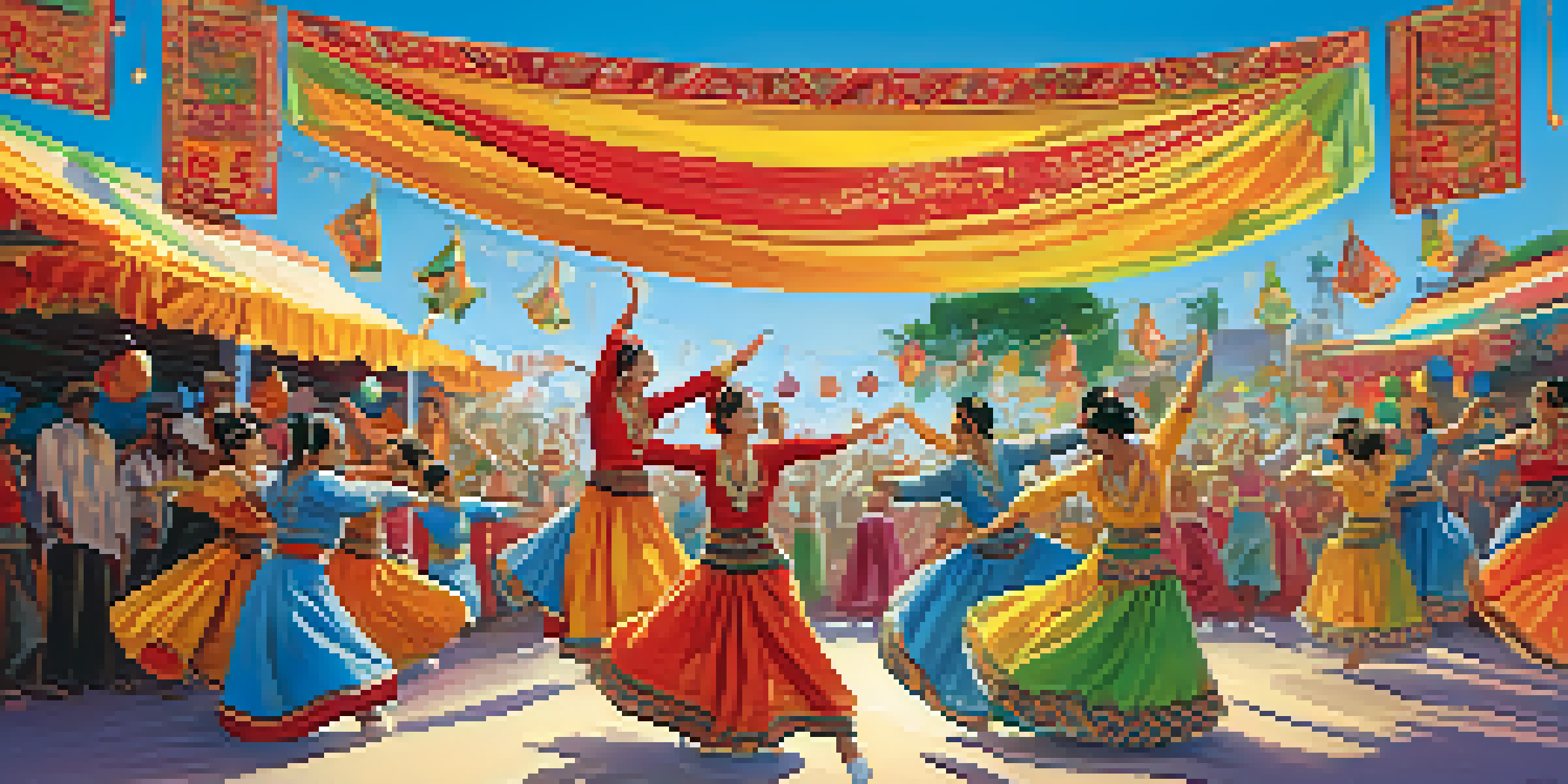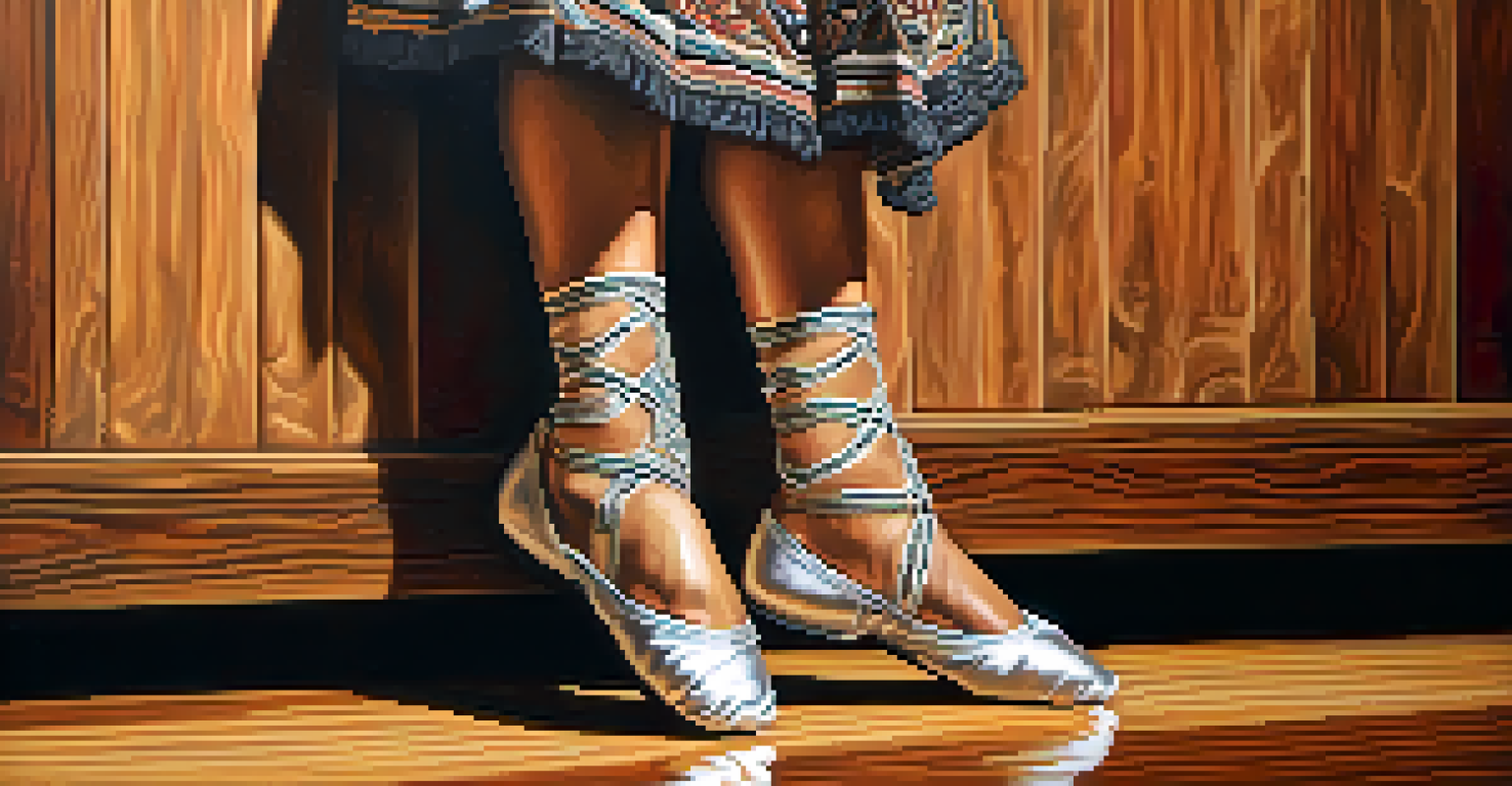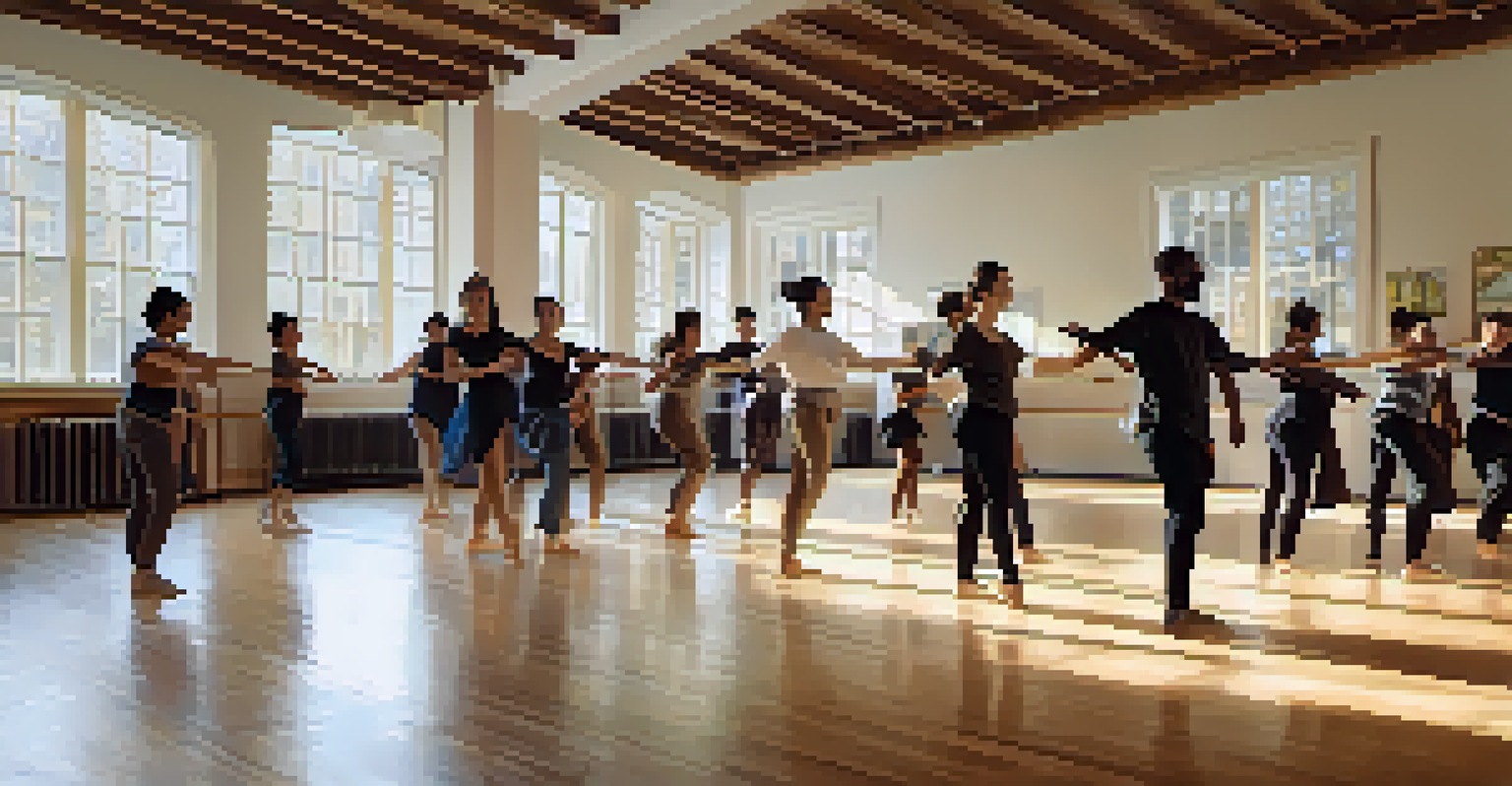Globalization and Its Influence on Traditional Dance Forms

Understanding Globalization and Its Reach
Globalization refers to the interconnectedness of cultures and economies across the globe. It’s like a vibrant tapestry where threads of different cultures intertwine and influence each other. This phenomenon is driven by advancements in technology, trade, and communication, fostering a world where ideas and practices flow more freely than ever before.
Globalization is about the interconnectedness of cultures and economies across the globe.
As we connect with people from diverse backgrounds, the sharing of cultural elements becomes more common. Just think about how popular dance styles, like hip-hop or salsa, have roots in specific cultures but are now embraced worldwide. This blending can lead to exciting innovations in dance but can also pose challenges to traditional forms.
The influence of globalization is evident in the way traditional dance is performed, taught, and perceived. While it opens doors for cross-cultural exchange, it also raises questions about authenticity and preservation. What happens when a dance form, once deeply rooted in its culture, is adapted for a global audience?
Cultural Exchange: The Double-Edged Sword
Cultural exchange is one of the most beautiful aspects of globalization, allowing traditional dances to evolve while reaching wider audiences. For instance, the fusion of traditional African dance with contemporary styles has birthed new genres that honor the past while embracing modernity. This can enhance appreciation and understanding of diverse cultures.

However, this blending can also lead to cultural appropriation, where elements of a culture are used without permission or understanding. Imagine a traditional Indian dance showcased in a music video devoid of its cultural context—this can dilute its significance and lead to misunderstandings. It's a delicate balance between sharing and respecting cultural heritage.
Globalization Blends Cultures
Globalization fosters interconnectedness, allowing traditional dances to evolve while raising questions about authenticity.
Engaging in cultural exchange requires sensitivity and awareness. Dancers and choreographers can celebrate diversity while ensuring that traditional forms are represented authentically, keeping their origins and meanings intact. This kind of mindful interaction can foster mutual respect and enrich the global dance landscape.
The Role of Technology in Dance Evolution
Technology plays a pivotal role in shaping how traditional dances are shared and experienced. Social media platforms like Instagram and TikTok have become stages for dancers to showcase their skills, attracting audiences far beyond their local communities. This instant access creates a global appreciation for diverse dance forms and allows for real-time learning and collaboration.
Cultural exchange is a delicate balance between sharing and respecting cultural heritage.
Video tutorials and online classes have made it easier for individuals to learn traditional dances from anywhere in the world. Picture someone in a small town learning the intricate moves of a traditional Thai dance through an online course—technology bridges geographical gaps and democratizes access to cultural education. However, it’s essential to approach this learning with respect for the culture it originates from.
Despite the benefits, technology can also lead to the commercialization of traditional dances, often prioritizing entertainment over authenticity. As dances become viral sensations, there’s a risk that their cultural significance may be overshadowed by their entertainment value. Striking a balance between sharing and preserving the essence of traditional dance forms is crucial in this digital age.
Commercialization of Traditional Dance Forms
The commercialization of traditional dance is a significant concern in the age of globalization. As these art forms gain popularity, they are often adapted for commercial performances, sometimes straying from their original meanings and contexts. Imagine a traditional ballet being performed in a flashy, modern setting—it may be visually stunning, but it can lose its cultural grounding.
Events like dance festivals and competitions can provide platforms for traditional dance, but they can also pressure performers to modify their styles for wider appeal. This shift can lead to a homogenization of dance forms, where uniqueness is sacrificed for marketability. Maintaining the integrity of these dances while still engaging with modern audiences is a challenge many dancers face.
Cultural Exchange's Risks
While cultural exchange enriches dance, it also poses risks of appropriation and loss of context.
Ultimately, the commercialization of traditional dances should be approached with caution. It’s essential to celebrate and promote these art forms while honoring their roots. By doing so, we can ensure that traditional dances not only survive in a globalized world but also thrive with their cultural identities intact.
Preservation Efforts Amid Global Changes
Despite the challenges posed by globalization, numerous efforts focus on preserving traditional dance forms. Cultural organizations, local communities, and artists are actively working to document and teach these dances to future generations. This commitment helps ensure that the rich histories and meanings behind each dance are not lost in the face of change.
Workshops, festivals, and community gatherings often serve as platforms for sharing traditional dances. These events create a sense of belonging and connection among participants and audiences, emphasizing the importance of cultural heritage. By fostering local pride and awareness, these initiatives can combat the potential erosion of traditional forms.
Moreover, collaborations between traditional and contemporary dancers can yield exciting outcomes. By blending old and new styles, artists can create innovative works that respect tradition while appealing to modern sensibilities. This approach allows traditional dance forms to evolve without losing their essence, showcasing the beauty of cultural continuity.
Globalization’s Influence on Dance Education
Globalization has transformed dance education, making diverse styles more accessible than ever. Dance schools now offer a wide range of classes, exposing students to various traditional and contemporary forms. This exposure fosters a greater appreciation for the world’s rich dance heritage and encourages students to explore movements beyond their cultural backgrounds.
However, this increased access also raises questions about the depth of understanding and respect for the dances being taught. A student might learn a traditional dance in a workshop but may not grasp its cultural significance or the stories behind it. To ensure meaningful learning, it’s crucial that educators emphasize the importance of context and history in their teachings.
Preserving Dance Heritage
Efforts to preserve traditional dance forms are crucial as globalization continues to influence their evolution.
Additionally, the rise of online dance education platforms allows students globally to learn from renowned instructors. This can democratize dance education, but it also underscores the need for instructors to approach teaching traditional forms with care and respect. By emphasizing cultural context alongside technique, educators can help preserve the integrity of traditional dance forms.
The Future of Traditional Dance in a Globalized World
Looking ahead, the future of traditional dance forms in a globalized world holds both challenges and opportunities. As cultures continue to interact, we can expect to see further evolution of dance styles, resulting in exciting new hybrids. This evolution can lead to fresh expressions that resonate with diverse audiences while honoring their origins.
However, it’s vital to prioritize the preservation of traditional dances amidst these changes. Communities and dancers must advocate for their cultural heritage, ensuring that the significance of these art forms is recognized and respected. This can be achieved through education, collaboration, and ongoing dialogue about the importance of cultural authenticity.

Ultimately, the future of traditional dance will depend on the willingness of artists, educators, and audiences to embrace cultural exchange while safeguarding the essence of these vibrant art forms. By fostering a sense of respect and understanding, we can create a world where traditional dances flourish alongside their contemporary counterparts, enriching our global cultural landscape.